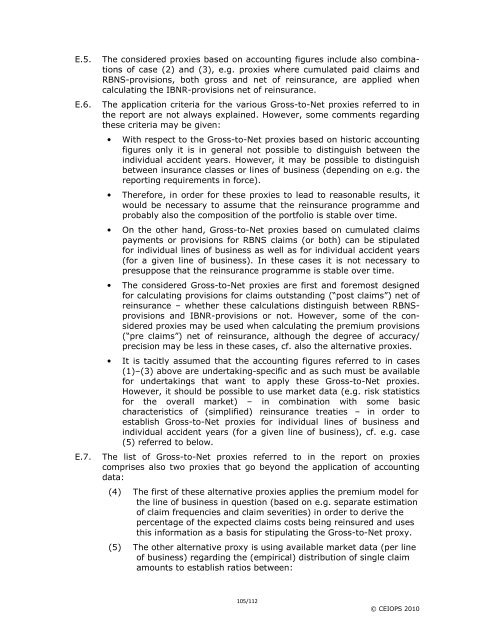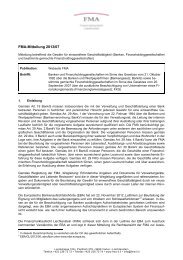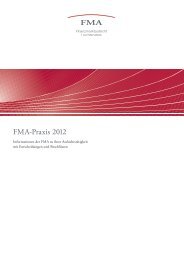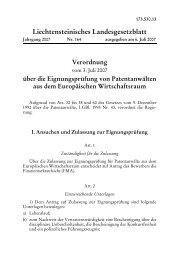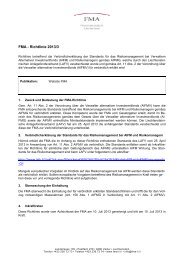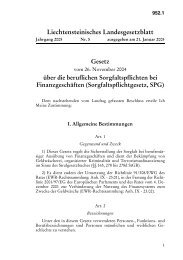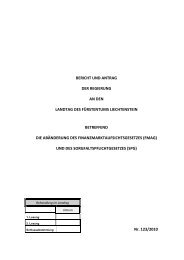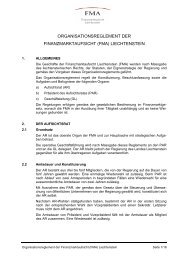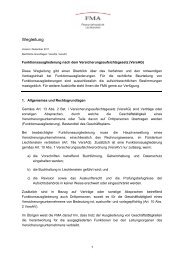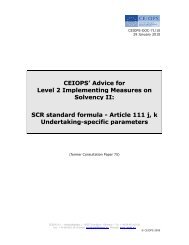CEIOPS' Advice for Level 2 Implementing ... - EIOPA - Europa
CEIOPS' Advice for Level 2 Implementing ... - EIOPA - Europa
CEIOPS' Advice for Level 2 Implementing ... - EIOPA - Europa
Create successful ePaper yourself
Turn your PDF publications into a flip-book with our unique Google optimized e-Paper software.
E.5. The considered proxies based on accounting figures include also combinations<br />
of case (2) and (3), e.g. proxies where cumulated paid claims and<br />
RBNS-provisions, both gross and net of reinsurance, are applied when<br />
calculating the IBNR-provisions net of reinsurance.<br />
E.6. The application criteria <strong>for</strong> the various Gross-to-Net proxies referred to in<br />
the report are not always explained. However, some comments regarding<br />
these criteria may be given:<br />
• With respect to the Gross-to-Net proxies based on historic accounting<br />
figures only it is in general not possible to distinguish between the<br />
individual accident years. However, it may be possible to distinguish<br />
between insurance classes or lines of business (depending on e.g. the<br />
reporting requirements in <strong>for</strong>ce).<br />
• There<strong>for</strong>e, in order <strong>for</strong> these proxies to lead to reasonable results, it<br />
would be necessary to assume that the reinsurance programme and<br />
probably also the composition of the portfolio is stable over time.<br />
• On the other hand, Gross-to-Net proxies based on cumulated claims<br />
payments or provisions <strong>for</strong> RBNS claims (or both) can be stipulated<br />
<strong>for</strong> individual lines of business as well as <strong>for</strong> individual accident years<br />
(<strong>for</strong> a given line of business). In these cases it is not necessary to<br />
presuppose that the reinsurance programme is stable over time.<br />
• The considered Gross-to-Net proxies are first and <strong>for</strong>emost designed<br />
<strong>for</strong> calculating provisions <strong>for</strong> claims outstanding (“post claims”) net of<br />
reinsurance – whether these calculations distinguish between RBNSprovisions<br />
and IBNR-provisions or not. However, some of the considered<br />
proxies may be used when calculating the premium provisions<br />
(“pre claims”) net of reinsurance, although the degree of accuracy/<br />
precision may be less in these cases, cf. also the alternative proxies.<br />
• It is tacitly assumed that the accounting figures referred to in cases<br />
(1)–(3) above are undertaking-specific and as such must be available<br />
<strong>for</strong> undertakings that want to apply these Gross-to-Net proxies.<br />
However, it should be possible to use market data (e.g. risk statistics<br />
<strong>for</strong> the overall market) – in combination with some basic<br />
characteristics of (simplified) reinsurance treaties – in order to<br />
establish Gross-to-Net proxies <strong>for</strong> individual lines of business and<br />
individual accident years (<strong>for</strong> a given line of business), cf. e.g. case<br />
(5) referred to below.<br />
E.7. The list of Gross-to-Net proxies referred to in the report on proxies<br />
comprises also two proxies that go beyond the application of accounting<br />
data:<br />
(4) The first of these alternative proxies applies the premium model <strong>for</strong><br />
the line of business in question (based on e.g. separate estimation<br />
of claim frequencies and claim severities) in order to derive the<br />
percentage of the expected claims costs being reinsured and uses<br />
this in<strong>for</strong>mation as a basis <strong>for</strong> stipulating the Gross-to-Net proxy.<br />
(5) The other alternative proxy is using available market data (per line<br />
of business) regarding the (empirical) distribution of single claim<br />
amounts to establish ratios between:<br />
105/112<br />
© CEIOPS 2010


